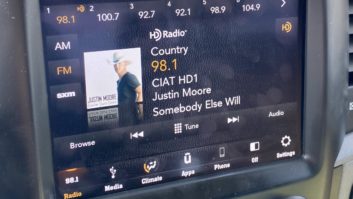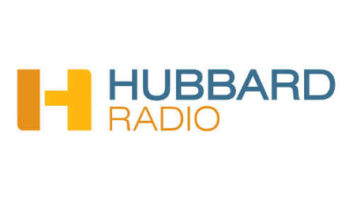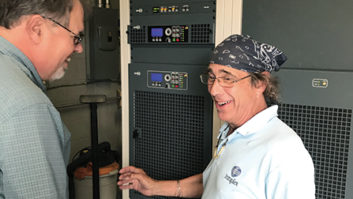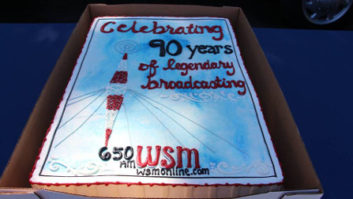Multicasting Is Embraced Quickly, But There Is Still Much to Learn
Last time we started a discussion on next steps for IBOC, and focused on multicasting as a potential killer app for HD Radio broadcasters on the FM band. This time we’ll consider the receiver marketplace in that regard.
Of the relatively few HD Radio receivers in the market, even fewer handle multicasting, but this is about to change. Numerous new HD Radio receivers are expected to hit the market soon, and most of these will include multicast reception capability.
How these receivers display and navigate among multicast channels is not necessarily uniform, however. This creates a potential problem for consumers’ accessibility to any new multicast services. It also makes broadcasters’ promoting of these services difficult.
For this reason, the NRSC has established a Supplemental Identification Task Group, or SIDTG, which may ultimately provide the industry with some guidance in this regard.
(Note that Supplemental Program Service or SPS is the official title given to an IBOC multicast channel in the NRSC-5 standard, distinguishing it from Main Program Service or MPS, which in IBOC Hybrid Mode is the name given to the digital simulcast of the analog program.)
Meanwhile the industry is considering various elements of what the consumer experience of multicast services could soon be like.
Tuner behavior
The first commercial multicast-capable receiver was produced by Kenwood in 2004, and its designers made their own decisions on how to tune and display multicast channels. Initially the Kenwood design used the pause button of the CD player (which has no function when the tuner is selected, of course) as a method of selecting supplemental program audio.
Kenwood radios also displayed “-HD1” after the station’s frequency, once the receiver switched from analog to MPS digital signal. If a multicast channel was selected, the display showed “-HD2” or “-HD3”, etc.
Other HD Radio receivers will use a similar approach, but generally with only numerals “-1,” “-2,” “-3″… instead. Some units will display these subchannel identifiers in a highlighted circle or other geometric shape, to better distinguish them from the frequency numbering. More variation is expected on how to access the multicast channels (e.g., buttons with differing labels, menu-driven operations, etc.).
Then there’s the “scanning problem.”
If an HD Radio user is scanning upwards through HD Radio-enabled channels, typical tuning behavior is to first access a station’s analog FM signal, and after about 5 seconds of acquisition time, to switch to MPS digital. Seeking or scanning any multicast services on that channel can then take place without difficulty (assuming the user knows what button to push).
When scanning down the dial, the user might intuitively expect the process to be essentially reversed. In other words, if you are listening to MPS on 107.3 MHz and push the scan-down button, the first signal you’d expect to encounter would be the highest-numbered supplemental service on 106.5 MHz, for example. But because this is a supplemental channel, which has no analog acquisition/back-up signal, the radio has to do one of several things – none of which are particularly pleasant or expected by the listener.
First, if the radio wants to take the intuitive approach of going to that highest numbered supplemental on the next station down the dial, there will be at least five seconds of muting, while the tuner acquires the channel (in silence), buffers the digital signal, checks for the presence of multicast services, then switches to the highest-numbered SPS signal. (The receiver might display some kind of “acquiring signal” sort of visual message during the silence.)
Alternatively, if the receiver wishes to avoid a long mute time, the station’s analog (main channel) signal could be played while the digital buffering took place, and the radio could switch to the highest-numbered SPS signal when it became available a few seconds later. The abrupt but delayed content change is likely to cause seriously negative listener reaction, however.
A final alternative would be to scan (at least in the downward direction) only MPS services, ignoring SPSs until the user actively called for them on each station. In other words, if a multicast service were desired by the listener, it could be accessed by another separate command (e.g., pushing the up-scan or some other button) after acquiring MPS on a newly tuned station. To aid in this, some visual display element could indicate the presence of any SPS on the channel.
Among automotive radio manufacturers, particularly the major car companies’ OEMs (Delphi and Visteon), resistance to addition of any new hardware buttons is expected to be high. Equally problematic is anything that encourages drivers to take their eyes off the road to read in-dash displays. (An increasing number of new vehicles now include scan and volume buttons on the steering wheel for this reason.) Therefore one-button scanning may be the best way, at least initially, to access a multicast channel, so just how the scanning of multicast channels is handled becomes critical for supplemental services’ access to mobile audiences.
Latency hurts
A related SPS latency problem will be encountered in any radio that allows direct access to a multicast channel (for example via a memory location). Broadcasters seem to like the idea that a new multicast service could be stored to a preset button like any other station, but no one likes the fact that when that service is recalled, there would be several seconds of dead air before the channel’s audio is heard.
And of course, when the IBOC signal fails, an MPS service will blend to analog, while an SPS service simply mutes. If the digital signal is reacquired while still tuned to an SPS service, there will likely be an additional few seconds of reacquisition time before SPS audio is played.
Perhaps listeners’ reaction to this problem will be blunted by increasing exposure to tuning latency in satellite radio and digital TV, or from buffering delays on digital music playback devices and PCs, but those delay times are typically shorter than the ~5 seconds expected for direct-tuning of an IBOC-SPS service.
Note that this issue doesn’t go away in the all-digital IBOC era. Then, too, the MPS service will maintain low-latency acquisition and backup via a low bit-rate, robust digital signal, while SPS services will not benefit from such assistance.
Marketing challenges
As mentioned earlier, in order for broadcasters effectively to cross-promote their multicast services on-air, or to advertise their presence in print or other media, there will have to be relatively consistent display and navigation for multicast channels in HD Radio receivers. Meanwhile, however, broadcasters themselves may be introducing another element of inconsistency in how they position their multicast services.
So far, most stations offering multicast services are leveraging their analog/MPS service’s existing brand and adding a related service (e.g., programming a second service with “Deep Tracks” or “New Releases” from the same musical genre as their main service). Other broadcasters have hinted they will offer weather and/or traffic services, once sufficient multicast receivers proliferate – perhaps even airing these as narrowband third services.
Yet some broadcasters would like to at least reserve the right to provide new multicast services with no connection to their existing brand – perhaps even offering services that run counter to their existing brand, such as country and classical, or conservative and liberal talk. Therefore they feel it’s important to be able to maintain a fully separate identity on multicast channels. How these divergent views eventually are accommodated remains to be seen, and will likely be one of the key discoveries of the early multicast era.
Finally, how ratings services deal with multicast channels will also be critical to their success. Both diaries and PPM systems will have to be adjusted to include multicast services, and broadcasters will need to establish effective and memorable on-air identification styles to encourage accurate diary reporting of multicast-channel listening.
HD Radio multicasting seems to have caught fire with broadcasters and receiver makers, with both sectors acting to enable this fundamental shift with relatively high speed. All this early activity is based on initial assumptions, however. As the transition continues, the industry should remain agile and open to adjusting its strategies to those that resonate most strongly with the audience, but it should act in a uniform and consistent fashion. Confusing listeners with widely divergent methods of accessing multicast services could obstruct success for one of HD Radio’s most promising components.
Next time we’ll look at some other areas of IBOC that will mature in coming years, and how they might also change the future landscape of radio broadcasting.












